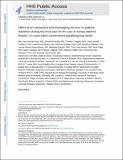| dc.contributor.author | der Kop, Mia Liisa van | |
| dc.contributor.author | Muhula, Samuel | |
| dc.contributor.author | Nagide, Patrick I | |
| dc.contributor.author | Thabane, Lehana | |
| dc.contributor.author | Gelmon, Lawrence | |
| dc.contributor.author | Awiti, Patricia Opondo | |
| dc.contributor.author | Abunah, Bonface | |
| dc.contributor.author | Bazira Kyomuhangi, Lennie | |
| dc.contributor.author | Budd, Matthew A | |
| dc.contributor.author | Marra, Carlo | |
| dc.contributor.author | Patel, Anik | |
| dc.contributor.author | Karanja, Sarah | |
| dc.contributor.author | Ojakaa, David I | |
| dc.contributor.author | Mills, Edward J | |
| dc.contributor.author | Ekström, Anna Mia | |
| dc.date.accessioned | 2021-12-10T23:58:59Z | |
| dc.date.available | 2021-12-10T23:58:59Z | |
| dc.date.issued | 2018-04-04 | |
| dc.identifier.uri | https://repository.amref.ac.ke/handle/123456789/502 | |
| dc.description | This is an open access article under the CC BY-NC-ND 4.0 license | en_US |
| dc.description.abstract | Background—Retention of patients in HIV care is crucial to ensure timely treatment initiation,
viral suppression, and to avert AIDS-related deaths. We did a randomised trial to determine
whether a text-messaging intervention improved retention during the first year of HIV care.
Methods—This unmasked, randomised parallel-group study was done at two clinics in informal
settlements in Nairobi, Kenya. Eligible participants were aged 18 years or older, HIV-positive, had
their own mobile phone or access to one, and were able to use simple text messaging (or have
somebody who could text message on their behalf). Participants were randomly assigned (1:1),
with random block sizes of 2, 4, and 6, to the intervention or control group. Participants in the
intervention group received a weekly text message from the automated WelTel service for 1 year
and were asked to respond within 48 h. Participants in the control group did not receive text
messages. Participants in both groups received usual care, which comprised psychosocial support
and counselling; patient education; CD4 cell count; treatment; screening for tuberculosis,
opportunistic infections, and sexually transmitted infections; prevention of mother-to-child
transmission and family planning services; and up to two telephone calls for missed appointments.
The primary outcome was retention in care at 12 months (ie, clinic attendance 10–14 months after
the first visit). Participants who did not attend this 12-month appointment were traced, and we
considered as retained those who were confirmed to be active in care elsewhere. The data analyst
and clinic staff were masked to the group assignment, whereas participants and research nurses
were not. We analysed the intention-to-treat population. This trial is registered with
ClinicalTrials.gov, number NCT01630304.
Findings—Between April 4, 2013, and June 4, 2015, we screened 1068 individuals, of whom
700 were recruited. 349 people were allocated to the intervention group and 351 to the control
group. Participants were followed up for a median of 55 weeks (IQR 51–60). At 12 months, 277
(79%) of 349 participants in the intervention group were retained, compared with 285 (81%) of
351 participants in the control group (risk ratio 0·98, 95% CI 0·91–1·05; p=0·54). There was one
mild adverse event related to the intervention, a domestic dispute that occurred when a
participant’s partner became suspicious of the weekly messages and follow-up calls.
Interpretation—This weekly text-messaging service did not improve retention of people in early
HIV care. The intervention might have a modest role in improving self-perceived health-related
quality of life in individuals in HIV care in similar settings. | en_US |
| dc.description.sponsorship | RTL, WelTel International mHealth Society and WelTel Inc, National Institutes of Health (NIH), Canadian Institutes of Health Research (CIHR), BC Lung Association, British Columbia Centre for Disease Control Foundation, and Grand Challenges Canada. Digital Health for TB Control, MLvdK, NIH, CIHR, and the CIHR Canadian HIV Trials Network | en_US |
| dc.language.iso | en | en_US |
| dc.publisher | Lancet Public Health | en_US |
| dc.subject | HIV/AIDS | en_US |
| dc.subject | CD4 | en_US |
| dc.subject | ART | en_US |
| dc.subject | Antiretroviral therapy | en_US |
| dc.subject | Mobile phones | en_US |
| dc.subject | PMTCT | en_US |
| dc.subject | Prevention of mother-to-child transmission | en_US |
| dc.subject | Text messages | en_US |
| dc.subject | SMS | en_US |
| dc.subject | Retention | en_US |
| dc.subject | Kibera | en_US |
| dc.subject | Informal settlements | en_US |
| dc.title | Effect of an Interactive Text-messaging Service on Patient Retention during the First Year of HIV Care in Kenya (WelTel Retain): An Open-label, Randomised Parallel-group Study | en_US |
| dc.type | Article, Journal | en_US |

